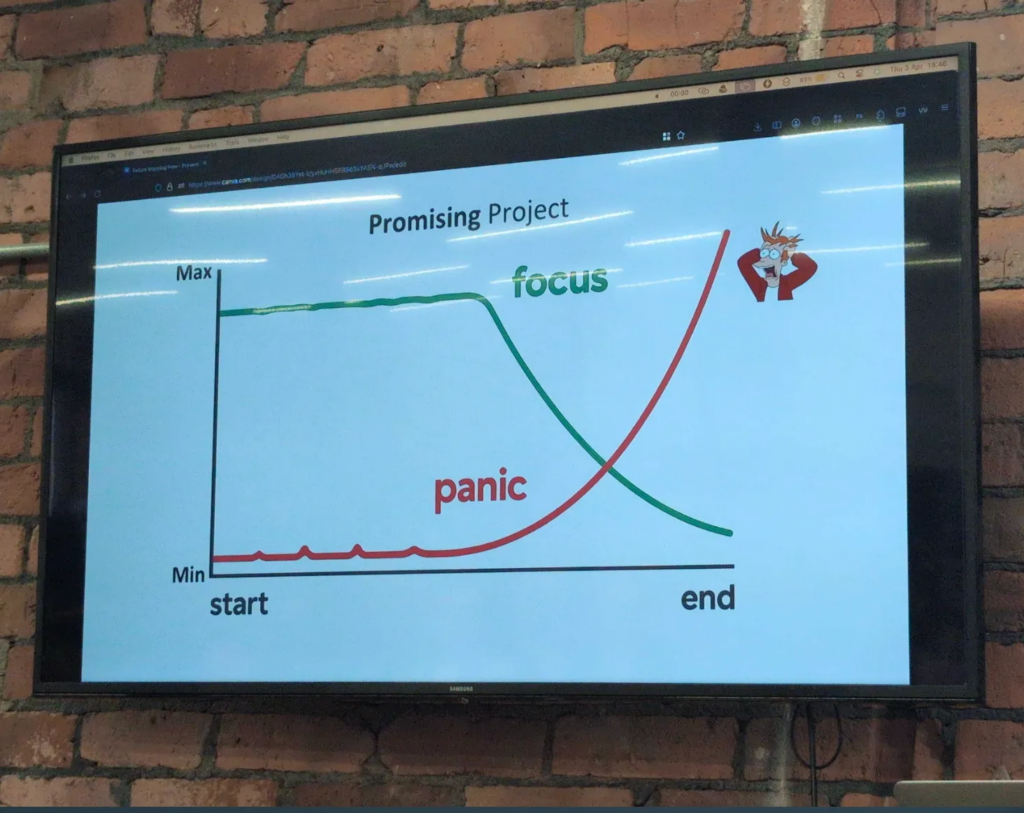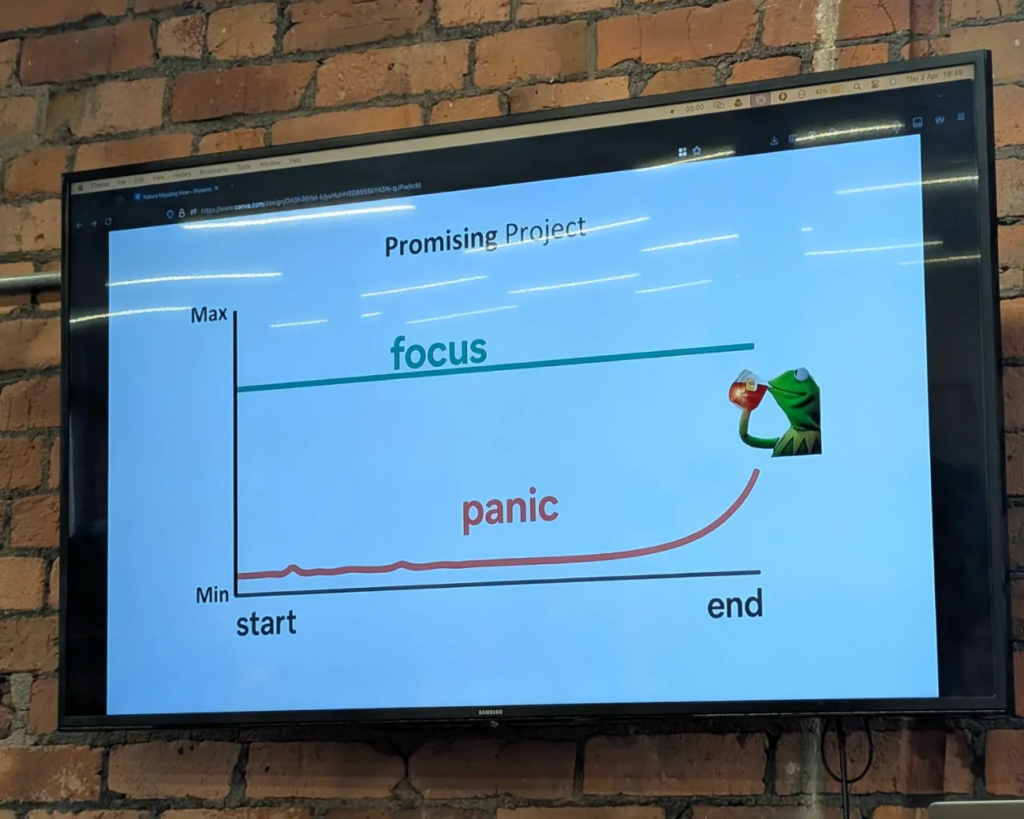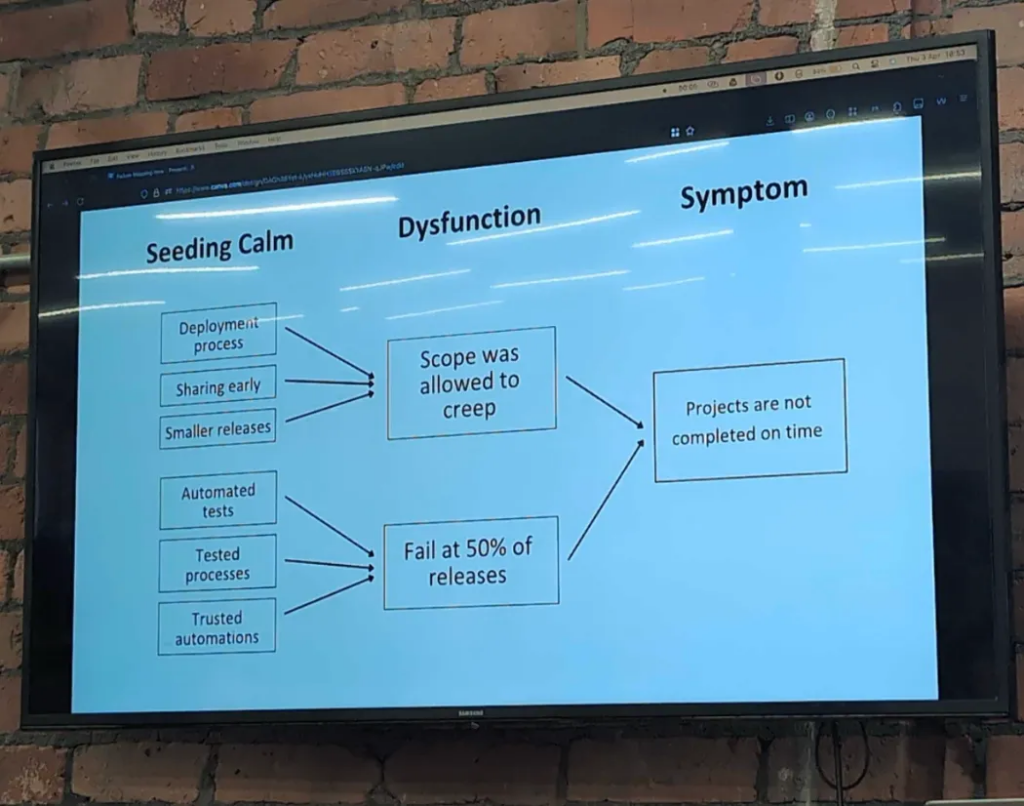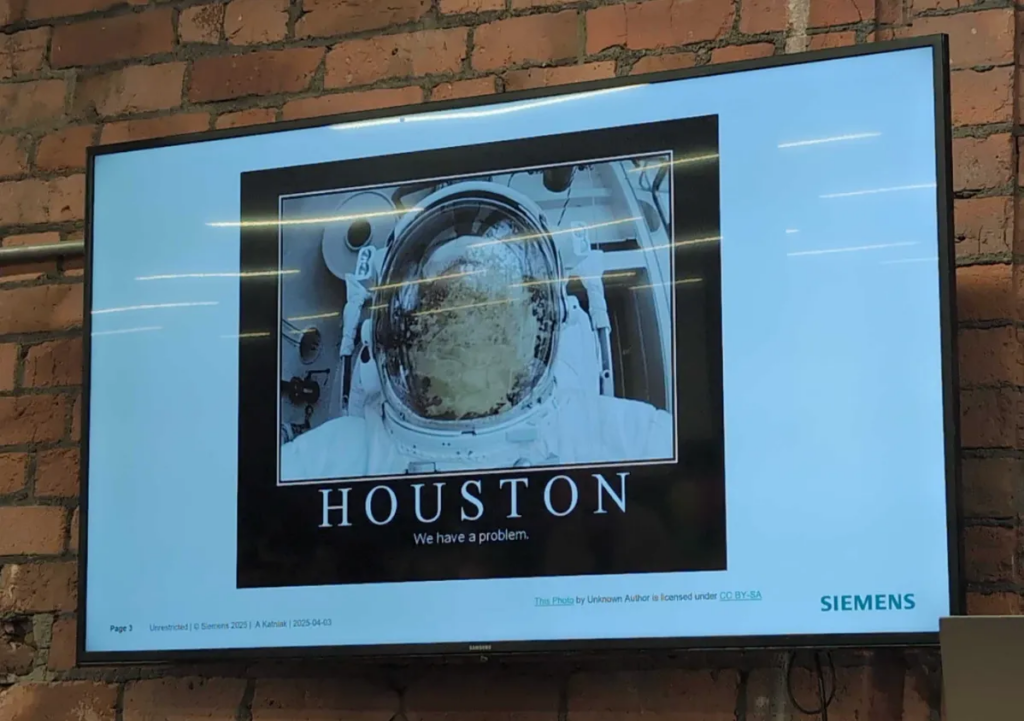
April 2025’s Deliver Sessions was at Forward Role‘s offices, just off Deansgate in Manchester city centre. This time, we had two talks about getting better at problem solving. Harry and Agnieszka have both had lots of experience with issues that come from rushing into work and challenges, and stories of how taking time to think things through early on can lead to much better outcomes.
Failure mapping: How slow starts foster better ends
We’ve all worked on projects that overrun, miss the mark, or deliver something no one really needs. And when we look back in post-mortems, it’s easy to focus on what went wrong during the work — or blame team behaviours — instead of spotting the deeper issues that were there from day one.
In this talk, I want to help shift that focus: to show how many of the problems we scramble to fix late in a project can be traced back to missed opportunities at the start.
I’ll share why tackling crucial decisions early — and making small but intentional shifts in process — can prevent rework, delays, and frustration later on, and lead to better outcomes for everyone involved.
— Harry Bailey (delivery coach for teams)
Promising projects can follow a very common path:

There’s a point where you realize there is more left to do, than there is time to do it in. Often that’s “hidden” work, things you didn’t even realize you needed to do. A natural reaction to this can be to panic – but panic doesn’t foster strong teams. In panic:
- you don’t often get time for teaching and learning
- you do get superheroes, who swoop in, save things, and take their powers to the next panic
Here’s a better approach. How can we make that happen?

Focus on supporting work, glue work: document, automate, fix the important basics. It’s hard to get this the attention it requires. Postmortems and retros help, but you can miss things – if you feel you’re not getting to the root of the kind of things described so far, you might like to try Failure Mapping. With this, you can look at what went wrong: What impacted your project the most? And what’s the earliest you can trace back the cause of that?
You can work back from the symptom you want to fix, through the dysfunctions that led to it, and agree ideas for “seeding calm” and preventing these kinds of panic and failure in future. Harry shared examples:


This is related to other tools that can be similarly useful: Five Whys, and Dysfunction Mapping.
Harry left us with advice on getting started with this kind of technique:
- Use data to convince leaders – show the failures, the cost of them
- Use experiments to convince teams – how will you measure whether it made a difference
- Remember: it takes a village to raise a child. This is something for everyone to take responsibility for.
Build smarter solutions by mastering the problem space
Are you jumping to solutions too quickly? In today’s fast-paced world, it’s tempting to “fix” problems on the surface. But without understanding the root cause, you risk solving the same issue repeatedly.
Join our one-hour session on Critical Thinking and Problem Solving, where you’ll learn:
- Why staying in the problem space longer leads to better outcomes
- Method to work in the problem space
- Strategies to confidently navigate the discomfort of deeper problem exploration.
Train your critical thinking muscle and connect the dots to long-lasting solutions!
— Agnieszka Katniak (chief product owner)

“Life is tough. We all have problems”. The natural response is to run away from that pain. It’s an automatic reaction – we are fast thinkers (Daniel Kahneman), we react to patterns we recognize, and getting away from bad things can be a sensible response.
But this can lead to us avoiding hard thinking and jumping straight into solutions. You’ll often come up with much worse answers, compared to spending some time living with confusion, worry and uncertainty for a little longer.
It’s time to rethink your approach if:
- The same problems re-occur even though you thought you fixed them
- You’re trying new things and getting the same results
- You’re not achieving what you wanted
- Or, you’re achieving the exact opposite of what you wanted (the “cobra effect”)
If any of this sounds familiar, you’re not spending enough time in the problem space. The problem space can feel like you don’t know the right thing to do, you don’t know whether you’re going in the right direction, you keep finding more uncertainties and more layers of problems. You want out – in the solution space you’ve decided what to do and you can get on with it.

We often don’t have the skills to stay in the problem space, and want to get out as quickly as possible. It feels like it matters less if you’re heading to a not-great solution… At least we’re making progress!
Agnieszka shared ideas for making it easier to stay in the problem space for longer:
- Acknowledge discomfort: Just a few words to say feeling uncomfortable is expected, and something to work through, can help people manage it.
- Separate the problem and solution spaces: In time, or by moving to different locations. This helps with the discipline of staying in one mode until it’s time to move on.
- Schedule enough time to slow down: Where Agnieszka works, they use 6-week cycles to look at tricky challenges – 3 weeks in the problem space to start with. And they stick to it: don’t rush, don’t shortcut, stay in that problem space for longer than you might think is necessary and see what comes out of it. Lots of benefits.
- Use a parking lot: People can see their point written, and acknowledged, they know they’ve been heard and we can come back to this. Then you can carry on with the planned topic.
So, what do we do in the problem space? Agnieszka says good problem definition is the most important and often the worst-executed step of the problem-solving process. She likes a quote from Charles Kettering: “A problem well stated is a problem half solved”, and shared a good range of vague or flawed problem definitions. Some of these have sunk companies, as they fail to understand the problem that’s facing their business (most famously, Blockbuster and Kodak).
Once you’ve defined the problem, you can use a range of tools to structure your exploration of it:
- root cause analysis (eg. tools from Harry’s talk above),
- systems thinking (e.g. this causal loop diagrams intro from Sophie Weston),
- creative tools to prompt ideas (with examples of Forced Analogy and Six Thinking Hats),
- and coaching conversations.
Agnieszka ended by encouraging us to spend more time in the problem space: Companies and individuals can stay in a firefighting mode because it’s satisfying to solve problems, and not to think about what’s causing them. Try something different.
More from the meetup
Deliver Sessions will be back somewhere in Manchester soon, and I’ll try to keep up my good habit of posting notes after each one.
- If you’d like to hear when future dates get announced, sign up to follow the meetup.
- If you might like to give a talk or workshop there, get in touch with any of the organisers: me, Zoe or Chris.
- If you’d like to read notes from past sessions, see all the Deliver Sessions posts.